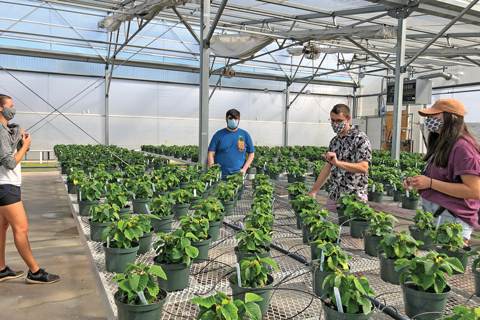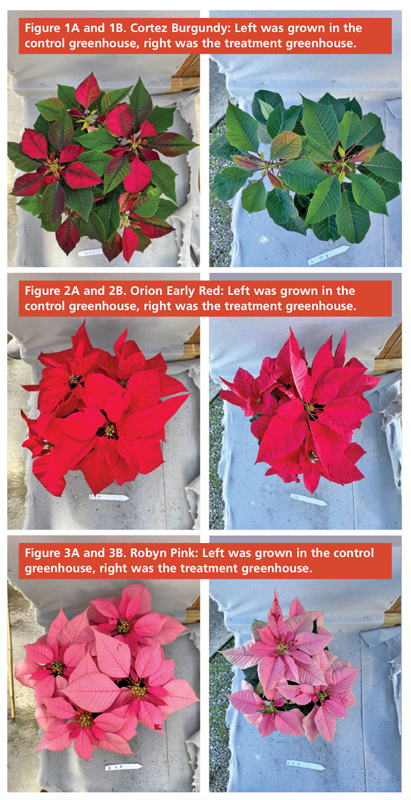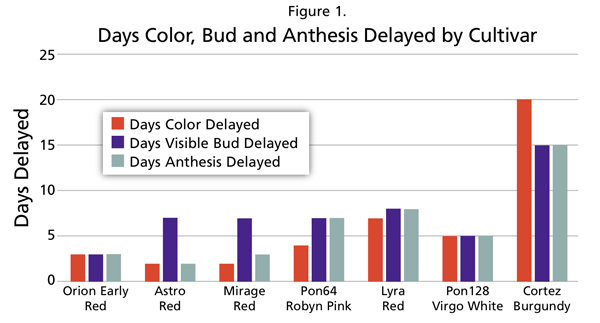6/1/2021
A Study on Heat Delay
Corrina Vuillequez, Zachary Ray & Maryanna Dose


Pictured right: A few of the students in the University of Florida Environmental Club. From left to right: Karolina Zakarkaite, Adam Wade, Zachary Ray and Maryanna Dose.
Last year, the Environmental Horticulture Club at the University of Florida continued its annual tradition of growing a poinsettia crop, adding a student-led research study. With guidance from faculty advisors and industry experts, the club investigated heat delay in seven different poinsettia varieties.
The varieties studied were Lyra Red, Orion Early Red, Mirage, Cortez Burgundy, Astro Red, Virgo White, and Robyn Pink. A set of plants from each variety was grown in a control greenhouse with average temperatures of 79F (26C) during the day and 69F (20C) at night. A parallel set of plants from the same varieties was grown in another greenhouse with target temperatures of 82F (27C) during the day and 75F (23C) at night. The students tracked the dates of first color, first visible bud and anthesis for each variety in each greenhouse.
Out of the seven varieties studied, Mirage Red, Astro Red and Orion Early Red displayed a minimal delay in first color of only a few days when kept in 75 to 82F. Therefore, they can be grown in hotter greenhouses and still come into color around the target date for commercial production.
By contrast, even in the cooler (69 to 79F) greenhouse, Cortez Burgundy showed a considerable delay in color development—later than ideal for the club’s poinsettia sale on December 7. In our warmer greenhouse, it was delayed by 20 days, leaving it quite green and unappealing at the time of the sale. Other interesting cultivars—Virgo White, Polly’s Pink and Lyra Red—were moderately delayed (four to seven days) in the warmer greenhouse, but still came into full color by the time of the sale. (For all data, see Figure 1.)
Higher temperatures affected all of the poinsettias to some degree, although the impact on some cultivars didn’t reduce marketability. With hundreds of poinsettia cultivars on the market, this experiment could be repeated with different cultivars and the club plans to expand these studies in future years. The Environmental Horticulture Club at UF is looking forward to next season and another student research study that they hope will help our Southern growers.
The data collected is defined as:
• First color: When at least half the plants within the variety in either of the two greenhouses had a thumb-print sized block of color.
• Visible bud: When at least half the plants within a variety in the control or in the treatment greenhouse had a visible bud.
• Date of anthesis: When at least half the plants within the variety in a greenhouse displayed visible pollen. GT
Corrina Vuillequez, Zachary Ray and Maryanna Dose are all undergraduate students at the University of Florida and members of the Environmental Horticulture Club.
